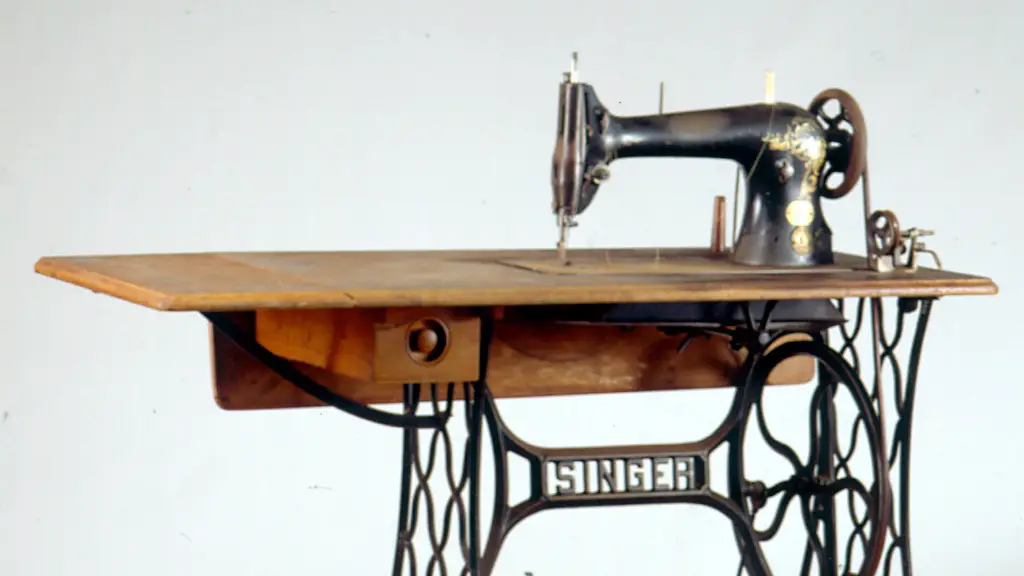Organizing
One of the most important steps in putting a sewing machine back together is organizing the various parts and understanding how they interact with each other. To start, it’s important to identify individual components and separate them. Distinguishing hinges, screws, bolts, and corrugations will help ensure that all parts are properly accounted for when it comes time to reassemble. Familiarize yourself with each component’s particular shape, size, and purpose. This will help you determine where they go when it’s time to put everything together. Sewing machine manuals are an invaluable resource during the reassembly process. Consult the manual to ensure that all parts are properly labeled and that the machine will be assembled to its original specifications.
Cleaning
Proper cleaning is essential when putting a sewing machine back together. Remove dust, lint, and debris from all external and internal components. Compressed air will help dislodge stubborn particles from hard-to-reach areas. Use a soft cloth and approved solvent to wipe down surfaces. Clean and lubricate all moving parts with a lightweight lubricant. Lubrication is a crucial component in the sewing machine reassembly process, as it will allow for easier and more reliable operation of the machine.
Checking Parts
Checks of the various components are necessary prior to reassembly. Taking the time to inspect parts can help save time, energy, and frustration further down the line. Check to see if any parts have been damaged during the disassembly process. If so, replace them with authentic parts from the manufacturer. Also, take a moment to familiarize yourself with the inner workings of the machine. Understanding the internal components can make the reassembly process easier and more efficient.
Assembling
Assembling the sewing machine requires patience, time, and focus. Start by consulting the manual and locating the parts that correspond to the diagrams in the manual. Pay close attention to the placement of the various bolts, screws, and hinges. Use the diagrams to correctly position parts during the reassembly process. Additionally, take the time to double-check the placement of each part. Checking to make sure parts are properly situated will help ensure the reliability and long-term operation of the machine.
Testing
Once the sewing machine is assembled, it’s time to test out its operation. Start by plugging the machine into a safe, compatible power source. Perform basic tests to check for proper machine operation. Small easy tests like threading the machine and checking for power are great exercises to help verify that the machine is properly functioning. Testing the machine before any bigger tasks can help diagnose problems early on.
Fine-Tuning
Before diving into major projects, it’s important to fine-tune the machine to each user’s specific needs. Consult the manual for instructions on altering settings and pressure. Take some time to experiment with these settings to determine what works best for the user and the type of fabric they will be working with. Additionally, don’t be afraid to replace worn or damaged parts with compatible components from other manufacturers.
Maintenance and proper Storage
Once the machine is assembled, it’s important to perform regular maintenance on it and ensure it is properly stored. Make sure to keep the machine in a room with low humidity and no direct sunlight. Additionally, keep the machine clean of dust and lint. Lubricate all moving parts on a regular basis to ensure they remain working properly. Finally, refer to the manufacturer’s manual when performing more complex maintenance and cleaning tasks.
Troubleshooting
Troubleshooting issues that may arise is an essential part of sewing machine repair and assembly. To diagnose problems, it’s important to understand common sewing machine malfunctions and their causes. Common problems include inaccurate stitch length, incorrect fabric tension, and skipped stitches. When troubleshooting, use the manual to identify potential issues and take the proper steps to resolve them. If the problem persists, consult a professional for assistance.
Learning the Different Attachments
Sewing machines come with a variety of attachments that can help enhance the sewing experience. Learn about each attachment and the different ways it can be used. Changing the stitch type, fabric feed, and needle position are some of the tasks that can be completed with the help of attachments. Additionally, make sure to store the attachments in a safe place to prevent damage and ensure they are readily available when needed.
Practising and Patience
Assembling and using a sewing machine is a skill that takes time and patience to develop. Practising basic stitches and techniques can help users get more familiar with the machine. Over time, this will result in major improvements in sewing quality and a more enjoyable sewing experience. It’s essential to keep learning and pushing oneself so that more complex tasks can be attempted confidently.


